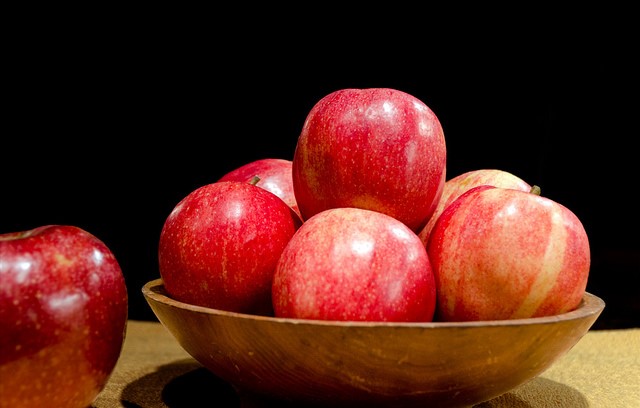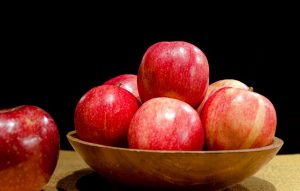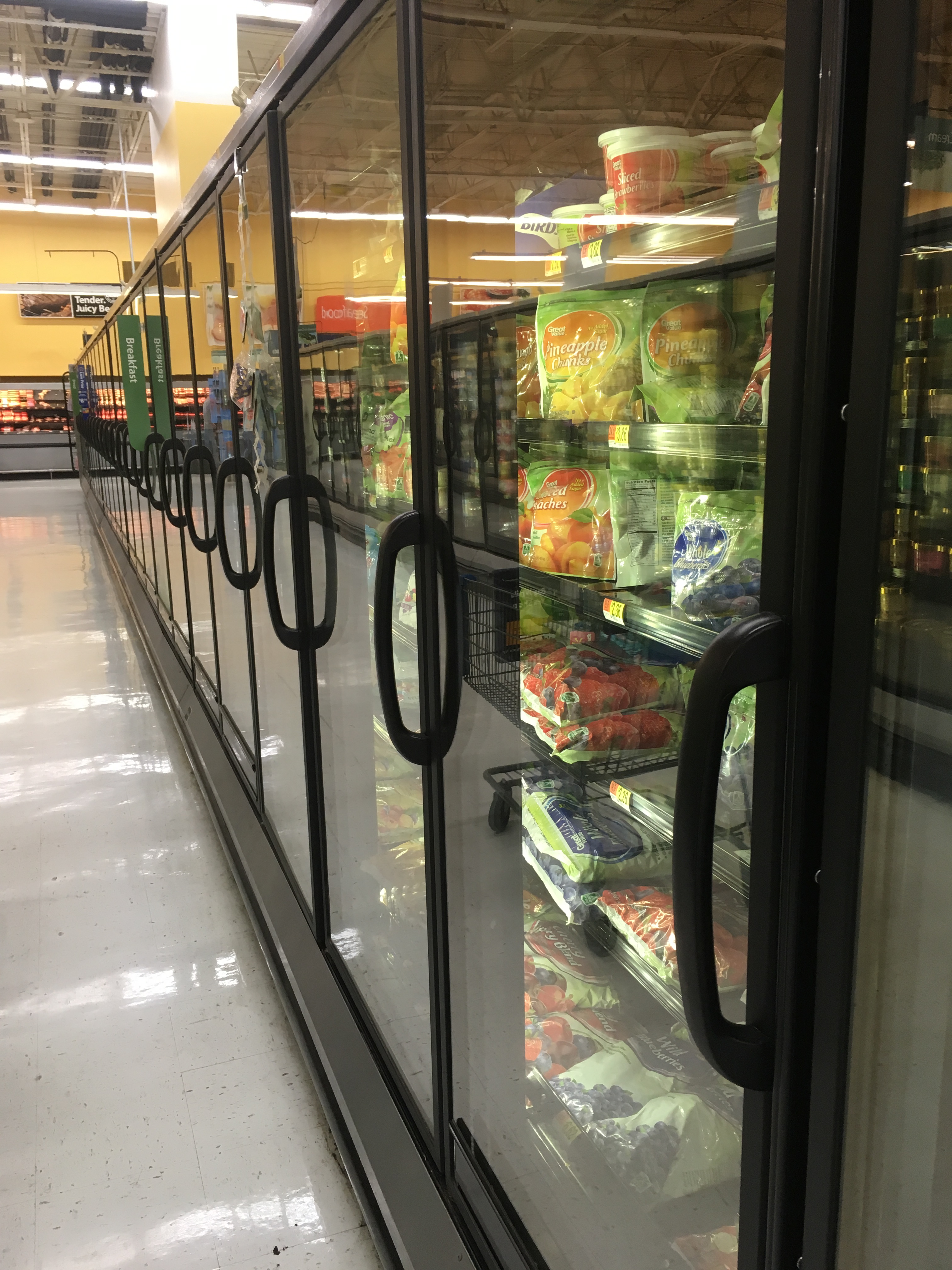
by Terri Keith | Aug 4, 2020

Credit: Photo by JÉSHOOTS from Canva Free Images
Watermelon is a tasty treat so celebrating watermelons in August sounds like a great reason to break out all the delicious and healthy watermelon recipes I’ve been saving—like this one for Watermelon Limeade.
Did you know that eating watermelon provides your body with Vitamins A, B6, C and potassium? Red watermelons are also a good source of lycopene. A two-cup serving of watermelon only has 80 calories but can provide 6% of your daily value of potassium, 8% of Vitamin A, 25% of Vitamin C and more!
Watermelons are also completely edible, from the fleshy center part all the way out to the green rind. The rind is typically cooked or pickled before being eaten and Watermelon Rind Pickles are popular here in the Southeast. Ninety percent of watermelons sold in stores are seedless, but if you do get a seeded watermelon, the seeds can be cooked and eaten too! They are usually sprouted and roasted or dried first.

Photo Credit: UF/IFAS File Photo
Buying a whole watermelon versus one that’s pre-cut can be a better value, but you’ll want to make sure you select a ripe melon. There’s an old wives’ tale about thumping the watermelon but the best way to choose is by picking it up and looking at it. Here’s what you’re checking for:
- Look for a watermelon that doesn’t have any bruises, cuts, or dents. Some scratches are normal.
- Check for a buttery or creamy yellow spot. This is an indicator of where the watermelon rested on the ground while it ripened.
- The watermelon should be heavy considering the size. It is 92% water!
When you are preparing your watermelon, make sure to wash it before cutting into it. Use cool running water, scrub it with a produce brush, then dry it with a clean paper towel or cloth towel. Many people skip this step since it’s heavy and can be bulky but it’s an important part of maintaining your food’s safety. If you don’t wash your watermelon before cutting into it, you could be transferring bacteria from the outside of the melon to the inner flesh. Be sure your hands and any knives, utensils and cutting boards you will be using are clean as well.
An uncut watermelon can be stored outside of the refrigerator for a week if it wasn’t previously chilled. Once it has been cut open, it will need to be stored in an airtight container and refrigerated—you’ll want to enjoy it within a week.
When you think about eating watermelon, I bet the first image that comes to mind is eating a plain slice right from the fruit. And that’s great! Just keep in mind that watermelon can be made into drinks, added to salads, frozen into popsicles, incorporated in a stir-fry or slaw or even grilled!
Now, back to those recipes… here’s one for Watermelon Rind Pickles if you want to enjoy them right away (these will only keep for 2 weeks in the refrigerator) and this is one for canning Watermelon Rind Pickles so you have them year-round! And if you want more, try the recipe section at the Produce for Better Health Foundation or the National Watermelon Promotion Board. Celebrate watermelons this August by trying a new recipe or two with this amazing fruit!
Resources:
National Watermelon Promotion Board. Frequently Asked Questions: https://www.watermelon.org/watermelon-101/facts-faqs/
National Watermelon Promotion Board, Nutrition: https://www.watermelon.org/nutrition/nutrient-profile/
Produce for Better Health Foundation, Top 10 Ways to Enjoy Watermelon: https://fruitsandveggies.org/stories/top-10-ways-enjoy-watermelon/

by Ginny Hinton | Jun 4, 2019
America’s favorite superfood is ripe in the Florida Panhandle! Well, it may not actually be everyone’s favorite, but it’s definitely a tasty superfood. Of course, I’m talking about the blueberry. If you love the sweet nutritious little blue fruit, now is the time to pick or purchase fresh from a local source.

Blueberries: Spectacular, Summer, Superfood
Photo source: Ginny Hinton
When it comes to antioxidants, blueberries are king. Antioxidants help protect our bodies from oxidative stress, which is linked to many diseases including arthritis, heart disease, stroke, and high blood pressure. They also help strengthen our immune system. Blueberries have one of the highest antioxidant levels of all common fruits and vegetables.
Blueberries are high in fiber (about 4 grams per serving), vitamin C and vitamin K. Of course, they’re also low in calories. Blueberries are available fresh in the Panhandle from late May into June.
When you’re picking blueberries, look for ones that are firm, dry, plump and smooth-skinned with a light greyish bloom. Stick to the deep blue ones for the sweetest flavor. Cover them and they’ll stay fresh in the refrigerator for up to ten days, or they can be easily frozen. Put them in a single layer on a baking sheet or cookie tray and freeze, then store them in airtight, resealable plastic bags. That way, they won’t stick together and you can use just the amount you need. Once you thaw them out, just be sure to use them within three days. Store blueberries unwashed and don’t rinse them until you’re ready to use them.
Don’t love to eat them plain? Nutritious, delicious blueberries are great in lots of dishes. For a quick breakfast or snack, add them to yogurt or cottage cheese and enjoy! Use them to flavor pancakes, waffles or muffins. Add them to a green salad for a sweet flavor burst. However you eat them, know that you’re doing a good thing for both your health and your taste buds.
Enjoy blueberries!

by Dorothy C. Lee | Oct 3, 2018

Bowl of apples
Photo source: bing
October is National Apple Month. “A” is for Apple. We have all heard this childhood saying as well as other apple idioms.
The Fall season has arrived and along with cooler weather, shorter days, and autumn leaves comes the bounty of Fall………apples.
In Autumn, apples fill farmers market and grocery store bins with seasonal shades of red, green, yellow, and russet. Popular varieties of apples grown in the United States include Mcintosh, Fuji, Red Delicious, Gala, Crispin, Honeycrisp, Granny Smiths, and Golden Delicious.
Nutrition
A large raw apple contains about 95 calories. Apples provide fiber, vitamins, and minerals. Apples are low in calories and high in antioxidants.
Selection
Each apple variety has its own distinctive flavor and texture. When purchasing apples choose a variety suitable for your intended use. Best apples for eating cooking baking The surface of the apple should be smooth, firm, unbroken, and free from bruises.
Preparation
Apples are delicious eaten raw. Simply rinse, cut into quarters and remove core from each section and slice. Use a vegetable peeler or a sharp knife to peel apples for cooking. To core apples for cooking push an apple corer through center of fruit from top to bottom, pull out core and stem. Coat peeled or sliced apples with lemon juice to prevent darkening. A bag of medium sized apples yields about 3 cups diced fruit or 2 ½ cups sliced fruit.
Cooking with Apples
Apples are the most versatile of all fruits. They are suitable for a variety of cooking techniques and can be used in a variety of recipes. Apples can be baked, grilled, poached, and even sautéed. Add diced apples to salads or dried and added to granola cereal. Sauté to accompany meat dishes and add to pancakes or waffle batter. For desserts, pair apples with a variety of cheeses.
Storage
Apples ripen faster at room temperature than in the refrigerator. Store apples in the refrigerator in a plastic bag to help retain moisture.
Celebrate the bounty of Fall with apples at their peak of flavor.

by Dorothy C. Lee | Apr 24, 2018
Grill Out Safely This Summer
Perhaps it’s the gentle climate with temperatures conducive to outdoor cooking for much of the year. Or it might be that an outdoor get-together with family, friends, and good food is a great way to celebrate the summer. Whatever the reasons, outdoor cookery is firmly established as a tradition in the South.
Outdoor cookery has given rise to many unique and flavor-filled recipes for foods that can be prepared on even the simplest grill. If long days of summer have you longing to fire up the grill, the following tips, delicious recipes, and helpful grilling charts will help make your outdoor cooking experience easy, safe, and rewarding.

Grilling
Photo Credit: Dorothy Lee
Safety is an important consideration when operating a grill. Improper use can cause a fire or explosion. Keep the area around a lighted grill clear of combustible materials, and never use a grill in an enclosed area such as a sheltered patio or a garage. Avoid wearing loose-fitting clothing that may catch fire. The cooking grids should be cleaned after every cookout. The last thing you want to do is cause someone to become ill due to improper cleaning or unsafe food preparation practices.
Wash your hands with hot soapy water for at least 20 seconds before starting to prepare any foods and wash your hands again if you do anything else—change a diaper, pet an animal, or blow your nose, for example. Cover any cuts or sores on your hands with a bandage or use plastic gloves. If you sneeze or cough while preparing foods, cover your mouth and nose with a tissue and turn your face away, or cough into your sleeve. Always wash your hands afterwards.
Bacteria multiply rapidly at room temperature. Most food-borne illness-causing bacteria cannot grow well at temperatures below 40°F or above 140°F. Thaw foods in the refrigerator or in the microwave. Never leave foods out at room temperature.
Keep everything that touches food clean. Bacteria can hitch rides around your kitchen on all sorts of things—plates and cutting boards, dirty utensils, dish rags and sponges, unwashed hands.
Never chop fresh vegetables or salad ingredients on a cutting board that was used for raw meat without properly cleaning it first. If possible, keep a separate cutting board just for the preparation of raw meat, poultry, and fish.
Wash cutting boards thoroughly with hot soapy water, and then sanitize with a solution of household bleach and water.
The most popular meat for outdoor grilling is beef, particularly ground beef. If ground beef burgers are to be the feature of your next cookout select freshly ground meat that has fat content of about 15%. Form the meat into loose patties. Cook hamburger patties to an internal temperature of 160°F.
Keep raw meat, poultry, fish, and their juices from coming into contact with other foods during preparation, especially foods that will not be cooked. Wash all utensils and your hands with hot soapy water after contact with raw meat.
Marinate meat, poultry and seafood in the refrigerator in a covered, non-metal container. Throw away any leftover marinade.
Grill food to a safe internal temperature. Use a meat thermometer to assure correct doneness of the food being grilled.
Safe minimum internal temperatures:
- Poultry (whole, ground, and breasts): 165°F
- Hamburgers, beef: 160°F
- Beef, veal, and lamb (steaks, roasts & chops):
- Medium rare: 145°F
- Medium: 160°F.
Hold meat at 140°F until served. Use a clean platter for transferring cooked meat from grill to serving table.
Summer is the time for getting together with friends and family and cooking outdoors. Make your outdoor grilling experience safe and enjoyable.
Safe Food Handling Fact Sheet, USDA, Food Safety and Inspection Series, https://www.foodsafety.gov/
When we think of foods to prepare outdoors we almost immediately think meat. However, grilled vegetables and grilled fruits make a delicious accompaniment to grilled meats.
Corn on the Cob Kabob
- 2 medium red onions, cut into 8 wedges each
- 4 fresh ears sweet corn, husked, silks removed, and cut crosswise into 4 pieces each
- Nonstick cooking spray
- ¼ cup butter, melted
- ¼ teaspoon garlic powder
- ¼ teaspoon onion powder
- ¼ teaspoon dried oregano, crushed
On each of eight 12-inch wooden skewers, alternately thread 2 onion wedges and 2 pieces of corn, leaving about ¼ inch between each vegetable. Lightly coat vegetables with nonstick spray.
For a charcoal grill, grill kabobs on the rack of an uncovered grill directly over medium coals for 15 to 18 minutes or until vegetables are tender and brown, turning occasionally to brown evenly. (For a gas grill, preheat grill. Reduce heat to medium. Place kabobs on grill rack over heat. Cover, grill as above.)
In a small bowl, combine butter, garlic powder, onion powder and oregano. Brush over vegetables. Makes 4 servings.
Cinnamon-Grilled Peaches
- 4 large ripe freestone peaches
- Eight 3-inch cinnamon sticks
- 8 fresh mint leaves
- 4 tablespoons unsalted butter
- ¼ cup firmly packed brown sugar
- ¼ cup dark rum
- ½ teaspoon ground cinnamon
- Pinch salt
- Peach or vanilla ice cream, for serving
Rinse the peaches and blot them dry with paper towels. Cut each peach in half and discard the pit. Then, cut each peach into quarters. Using a pointed chopstick or metal skewer, make a starter hole in the center of each peach quarter, working from the pit side to the skin side. Skewer 2 peach quarters on each cinnamon stick, placing a mint left between the 2 quarters.
Combine the butter, brown sugar, rum, cinnamon, and salt in a saucepan and bring to a boil over high heat. Let the glaze boil until thick and syrupy, about 5 minutes.
Prepare and preheat the grill to high. Brush and oil the grate. Next, place the skewered peaches on the hot grate and grill until nicely browned, 3 to 4 minutes per side, basting with the rum and butter glaze. Spoon any remaining glaze over the grilled peaches and serve at once. Peach or vanilla ice cream make a great accompaniment.

by Melanie Taylor | Feb 26, 2018
 Based on information provided by the American Frozen Food Institute, on average, 40% of all food in the United States goes uneaten and wasted, which is an annual loss of $165 million. Fresh fruit and vegetable waste makes up nearly one-third of this number. With these discouraging numbers and financial losses, how can the frozen food industry help to solve this problem? Frozen food and beverage companies work hard to create the safest and best freezing techniques to keep food safe by preventing microorganisms from growing and by slowing down the enzyme activity that causes food to spoil. Modern freezing techniques have been designed to preserve food at its peak freshness and nutrient content. Frozen food makers continue to work with the U.S. Department of Agriculture (USDA) and the U.S. Food and Drug Administration (FDA) to keep America’s food supply the safest in the world.
Based on information provided by the American Frozen Food Institute, on average, 40% of all food in the United States goes uneaten and wasted, which is an annual loss of $165 million. Fresh fruit and vegetable waste makes up nearly one-third of this number. With these discouraging numbers and financial losses, how can the frozen food industry help to solve this problem? Frozen food and beverage companies work hard to create the safest and best freezing techniques to keep food safe by preventing microorganisms from growing and by slowing down the enzyme activity that causes food to spoil. Modern freezing techniques have been designed to preserve food at its peak freshness and nutrient content. Frozen food makers continue to work with the U.S. Department of Agriculture (USDA) and the U.S. Food and Drug Administration (FDA) to keep America’s food supply the safest in the world.
Freezing means less wasted food and easier access to well-balanced, portion-controlled nutritious foods during every season and in every community. Many times, frozen foods cost less per serving, but most importantly, they have a longer shelf life than fresh or refrigerated foods.
How do frozen foods play such an integral part in the well-balanced, nutritious diets of Americans? The frozen food aisle offers a large variety of vegetables, fruits, and other prepared foods at reasonable prices year ’round. Freezing reduces the need for additives and preservatives. Frozen foods also provide nutritious options that fit into all of the food groups suggested by Choose MyPlate.gov (fruits, vegetables, whole grains, protein, and dairy). They also are a sensible choice when trying to control calories and fat, sugar, saturated fat, and sodium intake. In addition, unused products can be placed back in the freezer for later use.
If you have concerns about frozen foods, it’s time to rethink them. Let’s BUST those crazy frozen food myths swirling around out there!!!
FROZEN FOOD MYTHS VS. FACTS
MYTH: FROZEN FRUITS AND VEGGIES AREN’T AS NUTRITIOUS AS FRESH
FACT: Recent studies found there is no difference in nutrition between frozen and fresh produce.
MYTH: FROZEN FOODS ARE READY TO EAT
FACT: Frozen foods are ready to cook, not ready to eat. As their name suggests, ready-to-cook foods must be cooked or baked according to package instructions.
MYTH: FROZEN MEALS DON’T USE REAL INGREDIENTS
FACT: The freezer aisles of your supermarket are filled with meals made with the highest quality ingredients and prepared the way you would prepare them (if you had the time).
MYTH: FROZEN MEALS AREN’T ENVIRONMENTALLY FRIENDLY
FACT: Actually, frozen foods minimize the amount of spoiled food we throw away because they are already portioned out, so we can take what we need and save the rest.
MYTH: FROZEN MEALS ARE MORE EXPENSIVE THAN RESTAURANT TAKE-OUT MEALS
FACT: Restaurant-inspired entrees like seafood scampi, sesame chicken, and Monterey chicken cost under $4 each. You do the math.
MYTH: FROZEN MEALS ARE NOT A GOOD CHOICE FOR HEALTH-CONSCIOUS CONSUMERS
FACT: “Better-for-you” options are available in the frozen food aisle to make it easier for consumers to control intake of calories, fat, saturated fat, and sodium.
For more information on the frozen food and beverage industry, please visit www.affi.org.
For more information on incorporating frozen foods into your healthy lifestyle, please visit: http://edis.ifas.ufl.edu/fs186.











